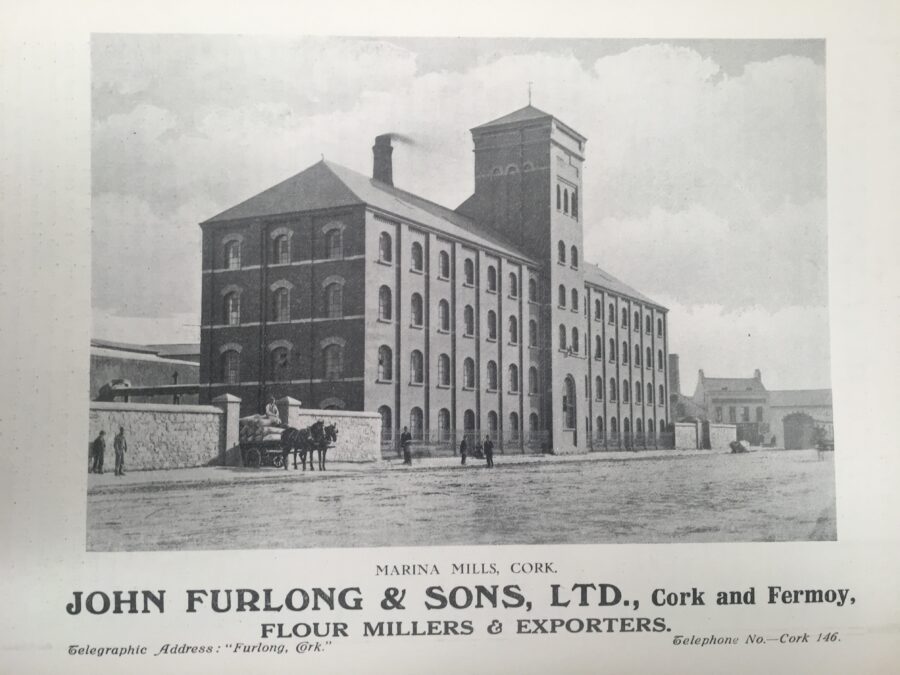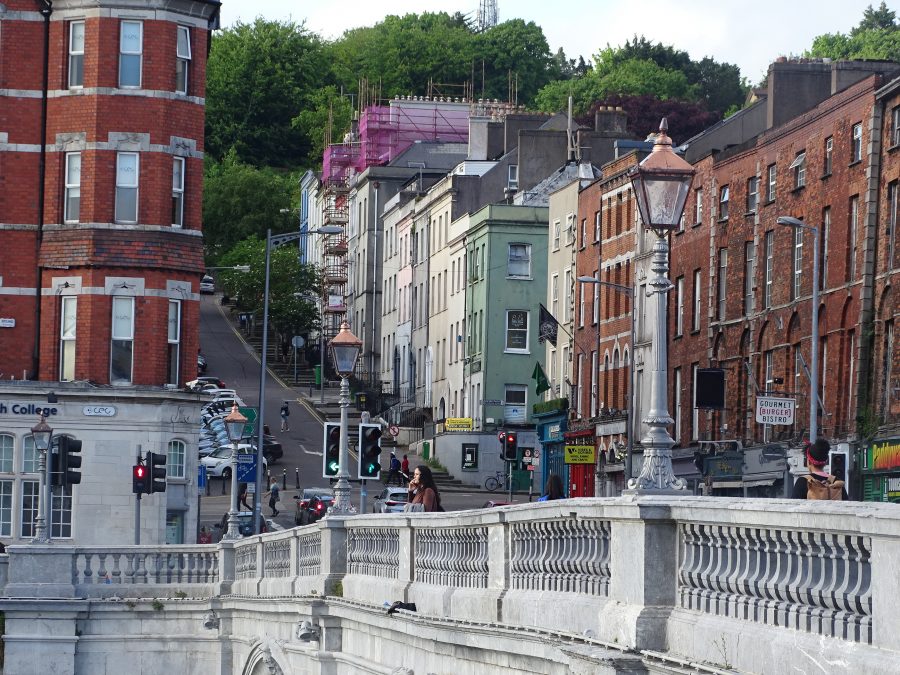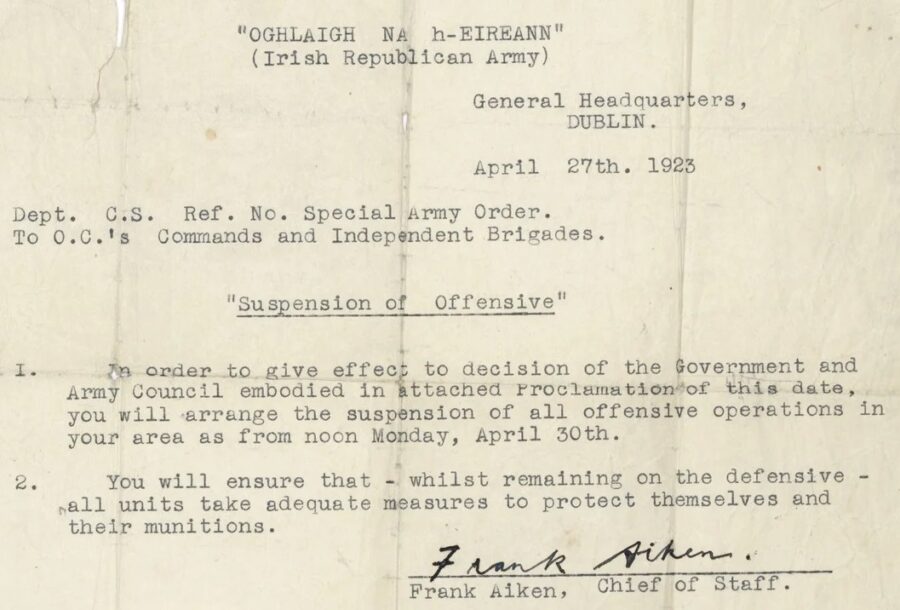
Kieran’s Our City, Our Town Article,
Cork Independent, 11 May 2023
Recasting Cork: Meetings with the Post-Master General
On 9 May 1923, Postmaster General Mr J J Walsh TD had a busy set of meetings at Turner’s Hotel on Cork’s Oliver Plunkett Street in receiving deputations and their representative of various interests of the city and region. The minutes of the meetings with the various groups in the Cork Examiner reveal insights into challenges of citizens and the commercial community in Cork in moving away from a dependence on UK markets in particular.
First up a deputation from County Cork Unpurchased Tenants’ Association attended. They sought completion of land purchase at the earliest possible moment. They were a branch of several agrarian pressure groups in Ireland in the 1910s and 1920s. Under the Irish Lands Acts, many farmers in preceding decades had purchased the freehold to their farms. The branches of different counties represented the remaining tenant farmers. The deputation also expressed their dissatisfaction with the manner in which public administration was being conducted in the county. J J Walsh assured the deputation that free holds would be dealt with. He was also of the view that many public bodies in the country were not doing their full duty so that considerable sums of the people’s money were being wasted through insufficient control and that there needed to be more value for money.
A deputation from the Cork Butter Market Trustees next waited on J J Walsh and called for a highly competent grader, who could act as superintendent in the Market, and a qualified analyst. Ample room could be created in the market for a high grade national brand. The Trustees present recalled that before 1884 the market paid over £10,000 a week in wages and commanded a higher price than Danish butter. An 1884 Westminster Bill permitted unbranded butter to be shipped from Ireland with the result that certain shippers sprang up all over the country and shipped butter of any sort or kind regardless of reputational damage it did. J J Walsh promised to raise their concerns at central government level.
A deputation from the South of Ireland Cattle Trade Association also attended on J J Walsh. The representatives noted that before Independence, Ireland had practically the monopoly of the external supplies of cattle to the English markets. They now found themselves against very stiff competition from Canada. They called on central government to lower freights particularly on railways. As an example, they quoted that the “carriage of a beast” in 1914 from County Cork to Yorkshire was roughly eight shillings with the cost going up to 33 shillings in early 1923. In 1914 a truck of nine cattle from Tralee to Liverpool via Dublin cost just £4 but that cost had risen to £15. The delegation also drew attention to the fact that post offices ought to be open at 8am in all country towns on the occasion of cattle fairs in order to facilitate traders. J J Walsh agreed with their perspective on the need to decrease costs denoting that; “It is the duty of government to be very wide awake and see that the ground was not cut from under their feet”.
A deputation of flour millers of the County and City of Cork met J J Walsh. Irish millers had been asked by government to consider several proposals. Among them was a proposal to require all imported flour to be placed in bags branded front and back with the name, address, and country of origin of the foreign manufacturer in large block capital letters of a specified minimum size, printed in black ink. England had recently taken a similar step in regard to Irish and other foreign products. The millers supported this proposal. They drew the attention of J J Walsh to the increased import of foreign flour – an increase of over 400,000 tons of flour in the previous twelve months and that every ton of foreign flour was estimated to create a loss of over £4 to the workers of Ireland.
The Cork millers related that the total annual capacity of flour production in England and Wales was 40 million socks per annum, but the consumption did not exceed 30 million sacks. This led to the selling of below cost flour to Irish buyers. The millers also asserted that the milling capacity of Ireland was about seventy per cent of the requirement. J J Walsh articulated that foreign made flour should be plainly and sufficiently branded to enable buyers to see whether the product was Irish or not; “Flour-milling is one of our staple industries, and it is behoved on everybody anxious to maintain such industries to wake up to the grave danger after destruction by carelessness our oversight on the part of the Irish people”.
The commercial community of Cork were the last to meet J J Walsh. They were most anxious to help the government in every way to bring about a better and more prosperous condition for the city and region. They pointed out the serious loss the city had suffered during the previous immediate years. Many subjects were discussed which included the restoration of Mallow railway bridge, the improvement of postal, telegraphic and telephone services, payment of claims for cork burnings, proposed valuation on new buildings, allocation of government contracts in the car carrier, abolition of the Cockett Tax, and collection of income tax by employers.
J J Walsh admitted that in the past Cork had not received its proper share of government contracts but in the previous two months Cork had received not less than a quarter of the total contracts of the Irish Free State. These contracts were given on merit based on the price but never less Cork had been fortunate in securing a big over proportion of the monies at the disposal of the Irish Free State.
On the question of reconstruction of the City Centre over thirty months on from the Burning of Cork event, J J Walsh produced figures that there were 400 rebuilding and property losses claims. A total of 180 claims had already been paid the money – this amounted to £150,000. He noted that the outstanding 200 claims would be cleared. He had also spoken on a number of labour leaders and they assured him that there was no truth in the assertion that Cork workmen were not as able and as willing in the execution of their work as those in any other part of Ireland.
JJ Walsh also met with tea agents and agricultural education groups before his return by train to Dublin.
Upcoming walking tours with Kieran:
Saturday 13 May 2022, The Battle of Douglas, An Irish Civil War Story, meet at carpark and entrance to Old Railway Line, Harty’s Quay, Rochestown; 2pm, (free, 2 hours, finishes near Rochestown Road).
Saturday 20 May 2023, The Northern Ridge – St Patrick’s Hill to MacCurtain Street; Tour around St Patrick’s Hill – Old Youghal Road to McCurtain Street; meet on the Green at Audley Place, top of St Patrick’s Hill, 2pm (free, duration: two hours, no booking required, finishes on MacCurtain Street).
Caption:
1201a. Marina Flour Mills, South Docks, Cork, 1919, from Cork: Its Chamber and Commerce (source: Cork City Library).

